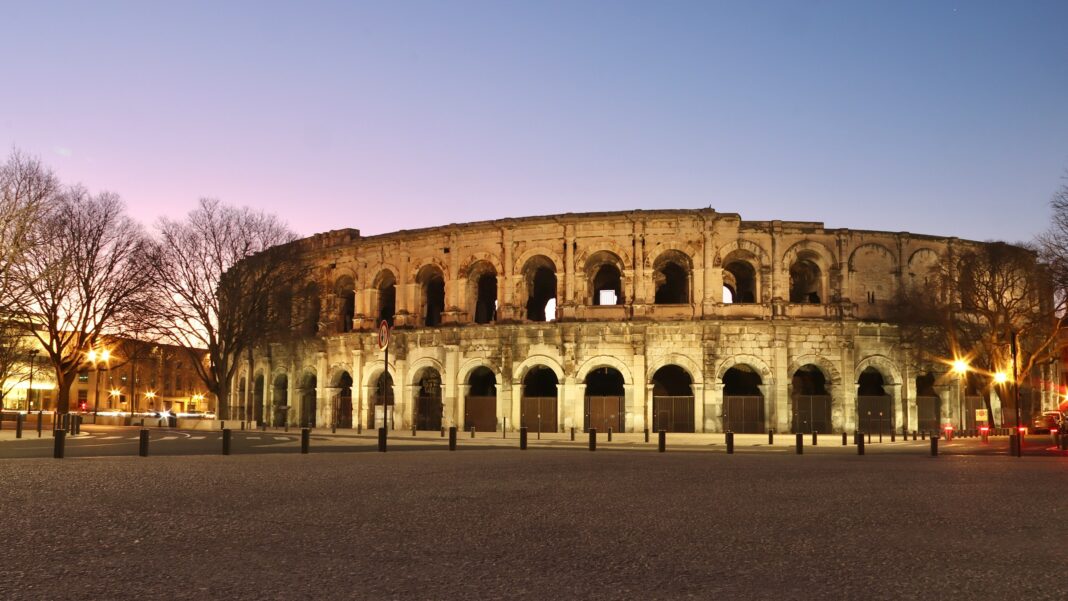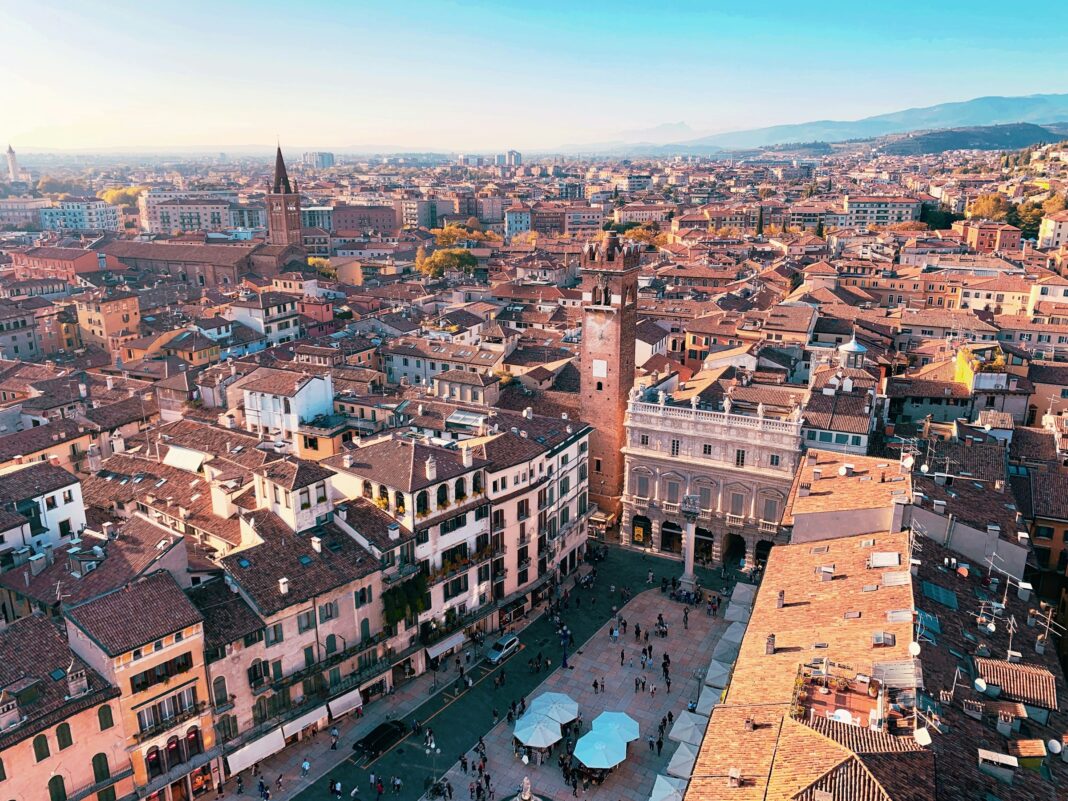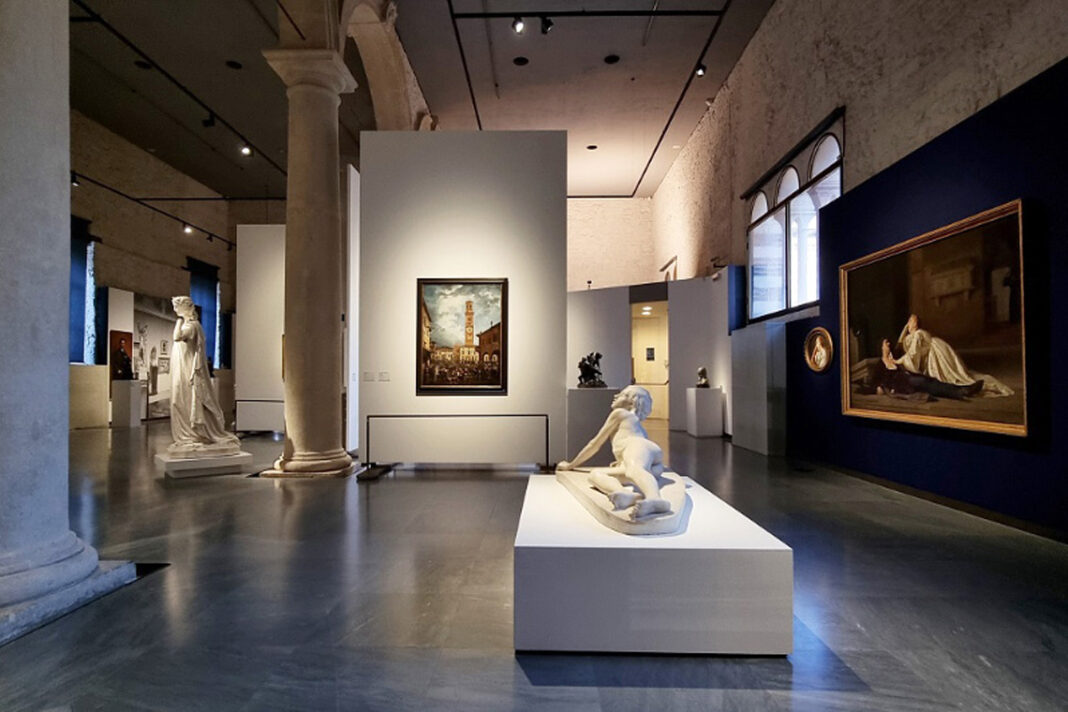Table of Contents
- Gladiator Clashes to Bard’s Whispers: The Verona Arena’s Roman Era (1st Century AD)
- History of the Verona Arena through Medieval Metamorphosis (5th-16th Centuries)
- A Change of Hands: Verona Arena under many Flags (17th-19th Centuries)
- War Scars to Standing Ovations: The Verona Arena’s History in the 20th and 21st Centuries
- Standing Ovation for a Timeless Stage
Imagine stepping out onto a stage surrounded by stands holding 20,000 to 30,000 people sitting where others have sat for thousands of years. This isn’t a dream, but the magic of the Verona Arena, a majestic Roman amphitheater that has defied time and continues to enthrall audiences even today. As one of the best preserved ancient Roman buildings in the world, its story is a captivating blend of Roman ingenuity, medieval adaptations, and artistic reinvention. From gladiator battles to Pink Floyd (no joke), the Verona Arena still welcomes 500,000+ show attendees every year. Not bad for being 2,000 years old! The history of the Verona Arena is as storied as the history of Verona itself, so let’s take a look at all of the wonderful (and…. not so wonderful) things the Verona Arena has hosted over the last two millennia!
Gladiator Clashes to Bard’s Whispers: The Verona Arena’s Roman Era (1st Century AD)
Verona, a bustling Roman colony since 89 BC, felt the need for grand entertainment. Thus, under the reign of Emperor Vespasian, construction began on the arena in roughly 26 AD. Construction primarily consisted of pink and white Valpolicella limestone, and originally had three sets of arches. Remarkably, in just four years, a marvel emerged: an elliptical amphitheatre capable of seating nearly 30,000 spectators. While the Arena is at the center of Verona today, during its construction it was actually outside of the existing Roman city walls. And the reason for this is… pretty gruesome. Because of the constant spilling of blood and collecting of bodies, it was common practice to build arenas far enough from densely populated areas of the city that nobody would have to smell it.
The inaugural games, held in 30 AD, were an absolute spectacle. In true Roman fashion, no expense was spared, and the games rivaled the most lavish held even in Rome. While modern capacity os limited to 15,000 people per event for safety, the Arena would frequently hold 30,000 spectators in ancient times. Gladiatorial combats, wild beast hunts, and athletic competitions enthralled the crowds. Enormous and elaborate stages would be set up for plays, or simply to add more showmanship to the other events. The arena pulsated with life, a testament to Roman love for entertainment and public spectacle. It was also a major draw for ancient tourism from nearby cities, helping to craft Verona into an economic powerhouse of the Veneto region.
History of the Verona Arena through Medieval Metamorphosis (5th-16th Centuries)
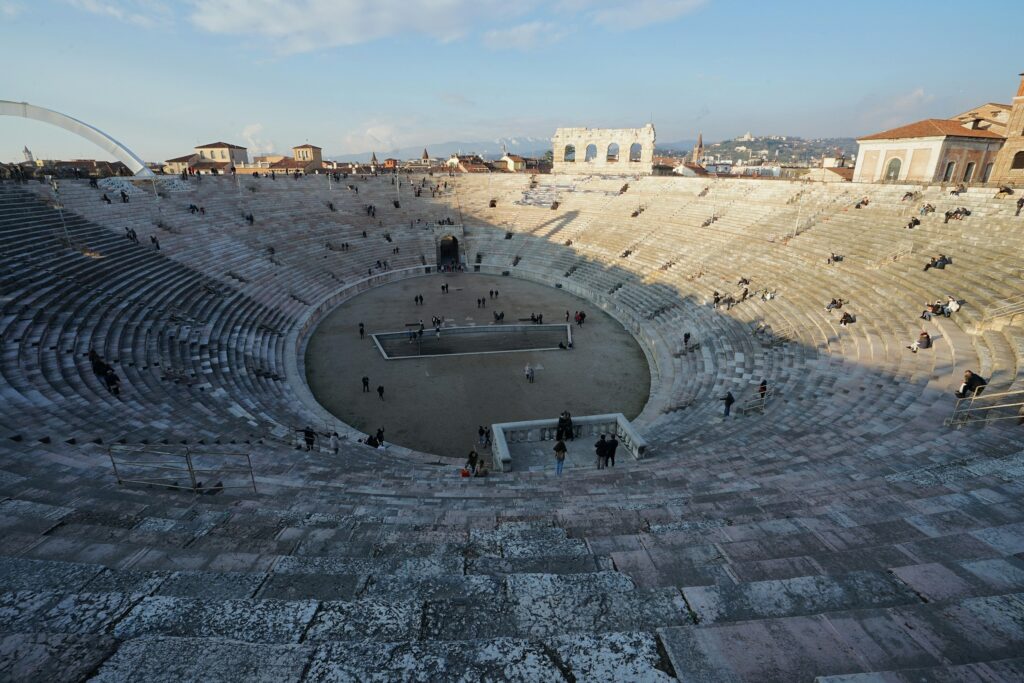
Gladiator combat was eventually completely banned in the year 404 AD by Emperor Honorius. It’s likely that gladiator style shows had already fallen out of fashion by this point due to the spreading of Christianity in the Roman empire, and also the dwindling amount of resources available for grandiose shows as the empire became weaker.
And eventually, like all empires, Rome faded, leaving the arena vulnerable to the sands of time. A major earthquake in 1117 AD caused the collapse of the external arches to the Arena, and its stones were pilfered for other structures. Yet, its spirit couldn’t be completely extinguished. It became a refuge for Verona’s residents during barbarian invasions, offering community and protection.
But the echoes of its Roman past weren’t entirely silenced. Nobles used the arena’s upper levels for tournaments and jousting, the clash of metal replacing the roar of lions. Exotic animals were paraded within its walls, igniting a flicker of the arena’s former wonder. The medieval period transformed the Arena from a stage of glory to a stage of everyday life. Houses and workshops crept into its arches, transforming it into a vibrant microcosm of the city. Imagine cobblestone streets snaking through the structure, children playing amidst ancient arches, and the aroma of fresh bread wafting from a bakery nestled within. The arena, though no longer hosting grand games, became a living, breathing part of Verona’s heart.
In the 1500s the Verona Arena had fallen into a state of disrepair after 1500 years of games, events, battles, being used as a prison, and much much more. The Venetian Empire decided to restore the Arena as part of the Renaissance and rediscovery of the ancient. Towards the end of the 16th century, the history of the Verona Arena once again starts to center around games and entertainment. Knights came from as far as Sweden, and bull hunting shows once again became popular.
A Change of Hands: Verona Arena under many Flags (17th-19th Centuries)
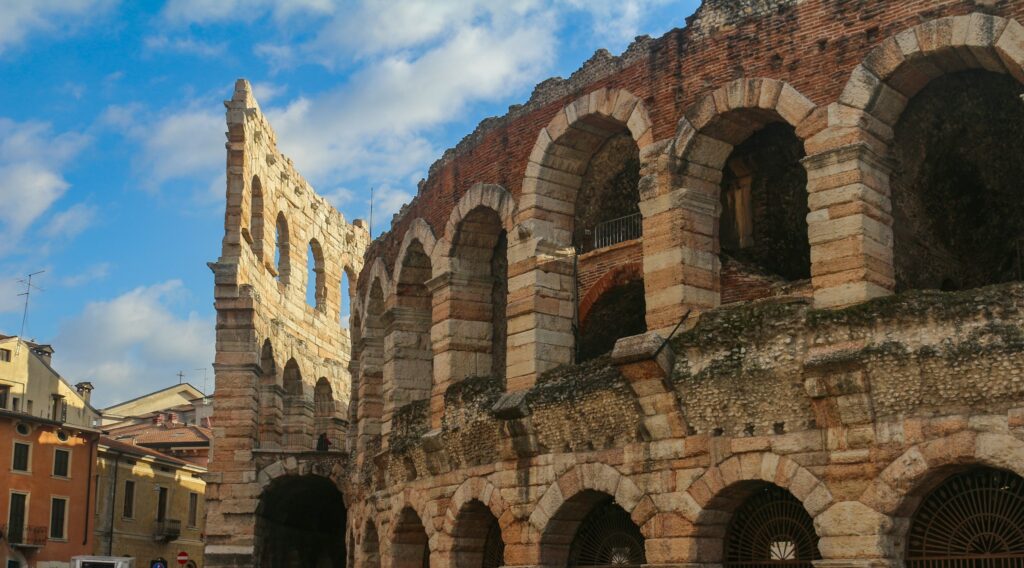
The 18th century saw the Arena blossom into a renowned opera house. Audiences flocked from across Europe, lured by the unique ambience and captivating performances. Imagine the buzz of excitement as renowned composers like Vivaldi and Hasse premiered their works on this historic stage. The Arena wasn’t just a venue; it was a crucible of artistic innovation, inspiring composers and captivating audiences
However, the Arena’s journey wasn’t without its detours. In 1796, French forces under Napoleon Bonaparte swept through Italy, occupying Verona. Imagine the iconic amphitheatre transformed into a military depot, echoing with the clatter of weapons instead of applause. While this period disrupted the artistic flow, it also brought an unexpected guest – Napoleon himself. Napoleons visit added another layer to the Arena’s already rich history.
After Napoleon’s downfall, Verona, along with the Arena, fell under Austrian rule. Despite the political shift, the arena’s artistic identity remained strong. The 19th century saw the rise of legendary opera stars like Maria Callas, whose voice resonated through the historic amphitheatre, enchanting audiences.
War Scars to Standing Ovations: The Verona Arena’s History in the 20th and 21st Centuries
The early 20th century wasn’t as grand as the Roman spectacles, but it brought its own unique flavor. Silent films flickered on the arena’s ancient walls, transporting audiences to a different kind of spectacle. Circuses rolled into town, filling the air with the aroma of popcorn and the joyful shrieks of children. Even hot air balloons took flight from its stage, adding a touch of whimsical modernity to the historic landmark.
However, war cast a long shadow. World War II inflicted painful scars on the Arena, bombs etching their destructive stories onto its façade. Imagine the silence echoing through the damaged amphitheatre, a stark contrast to its usual vibrancy. Yet, the Arena wouldn’t be silenced. A post-war wave of restoration, fueled by unwavering local spirit, breathed new life into its weathered stones. In 1953, the arena reopened its doors, the first opera of the season carrying the poignant title “Aida” – a message of peace and love resonating from its stage once more.
Today, the Arena di Verona stands as a UNESCO World Heritage Site, a testament to human ingenuity and cultural evolution. Its annual opera festival attracts hundreds of thousands of visitors, generating over €60 million for the local economy. Beyond economic impact, it holds immense cultural significance. With its ongoing restoration projects and innovative programming, the Arena’s future looks brighter than ever.
Standing Ovation for a Timeless Stage
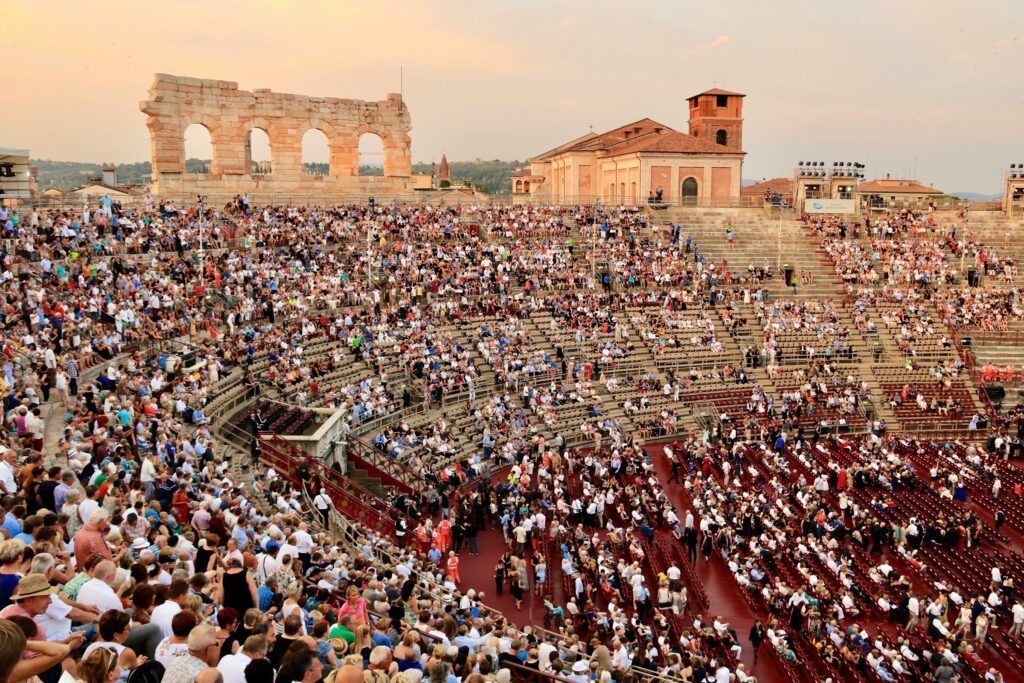
The Verona Arena is more than just an amphitheatre; it’s a living testament to human resilience, artistic evolution, and the enduring power of entertainment. As you stand amidst its weathered stones, close your eyes and listen. You might hear the clash of swords, the cheers of the crowd, and the soaring notes of an opera. The history of the Verona Arena is far from over, for its stage will continue to host new performances, captivating audiences for generations to come. So, take a bow, Arena di Verona, for you deserve the standing ovation that spans centuries.


